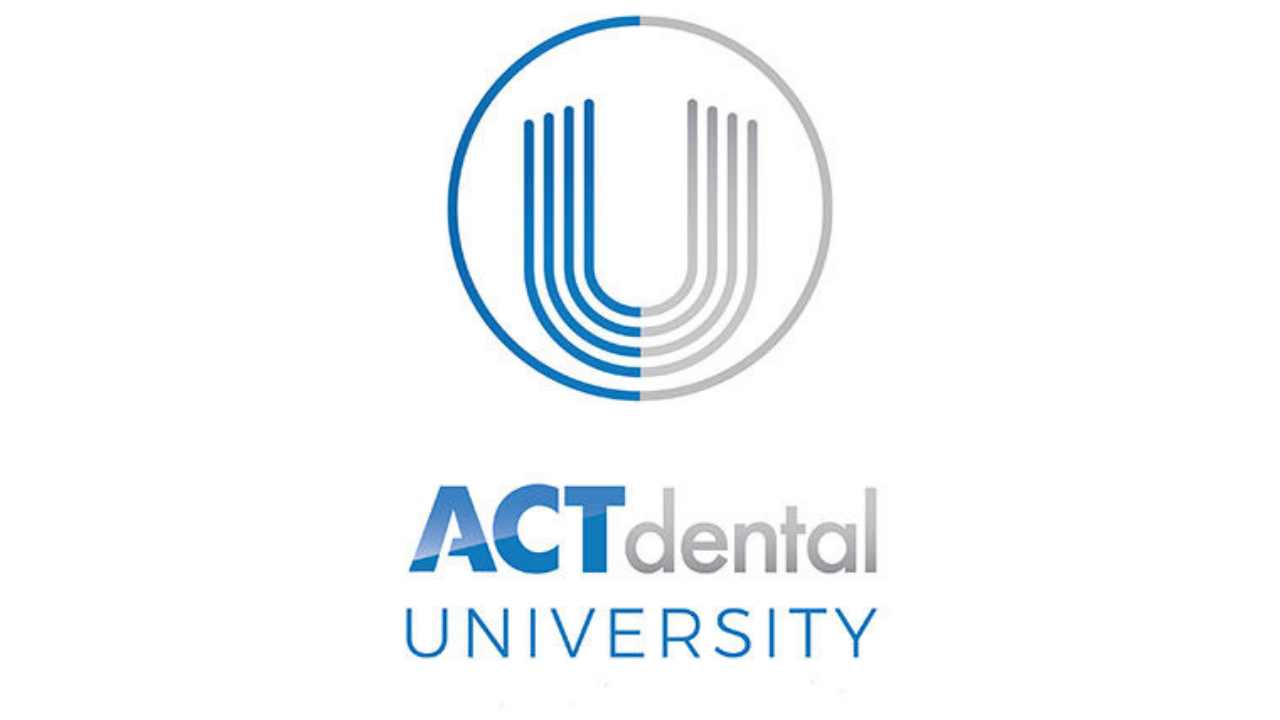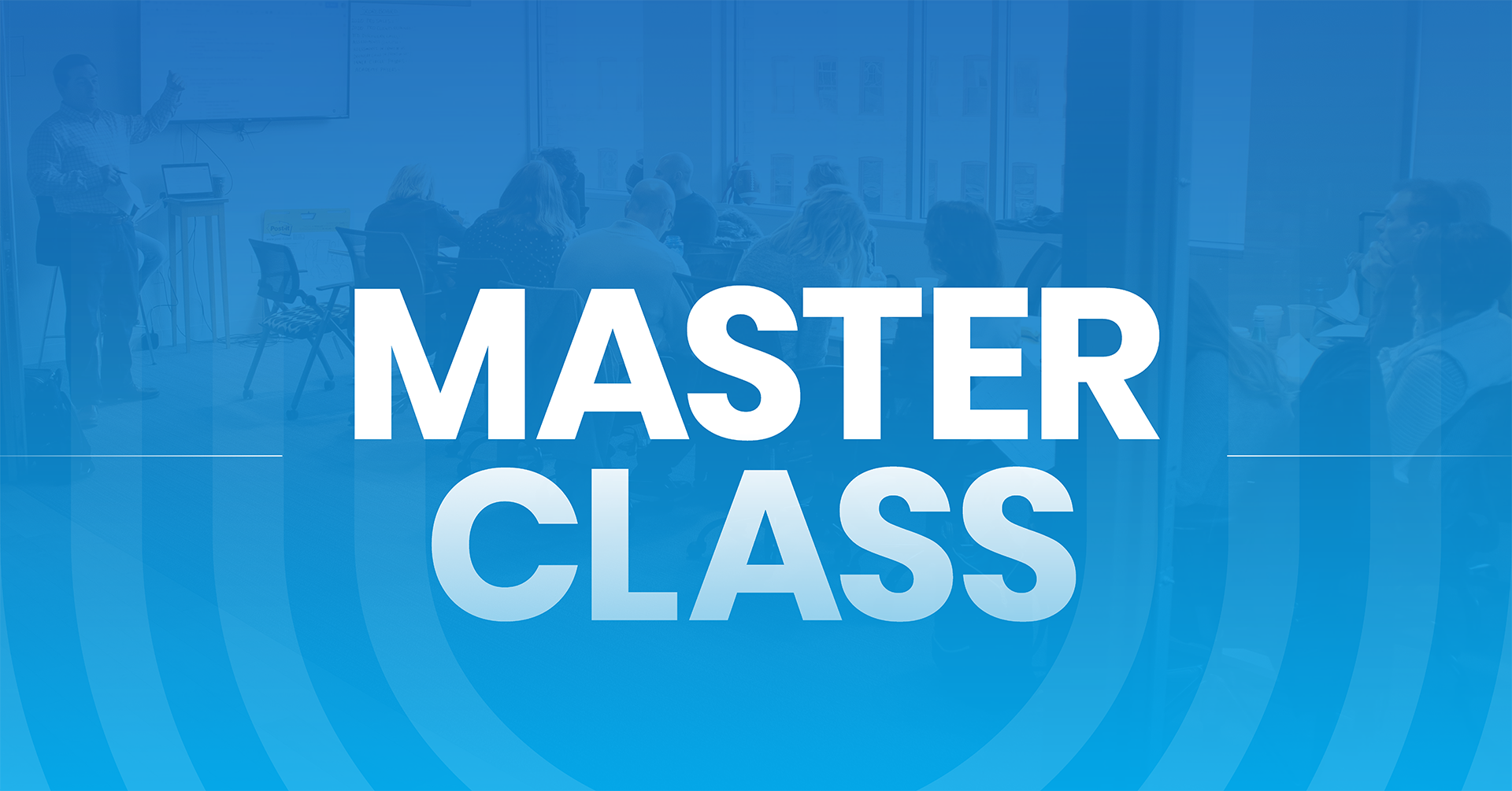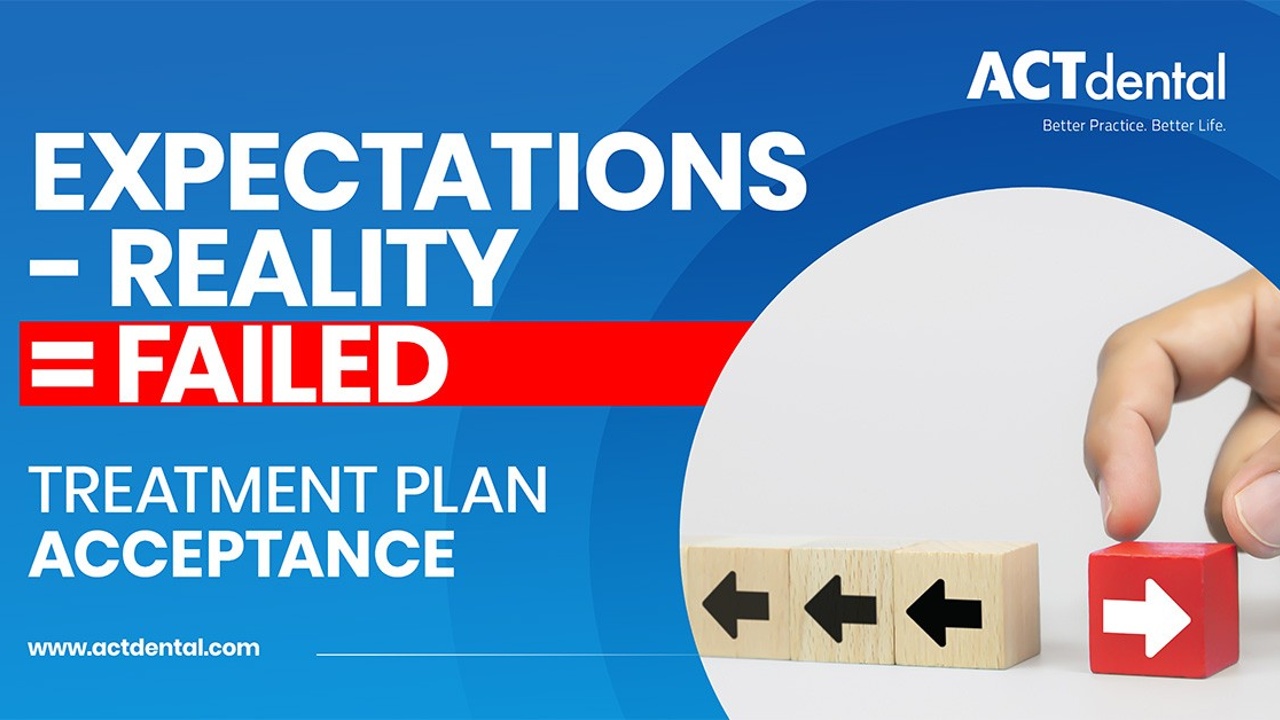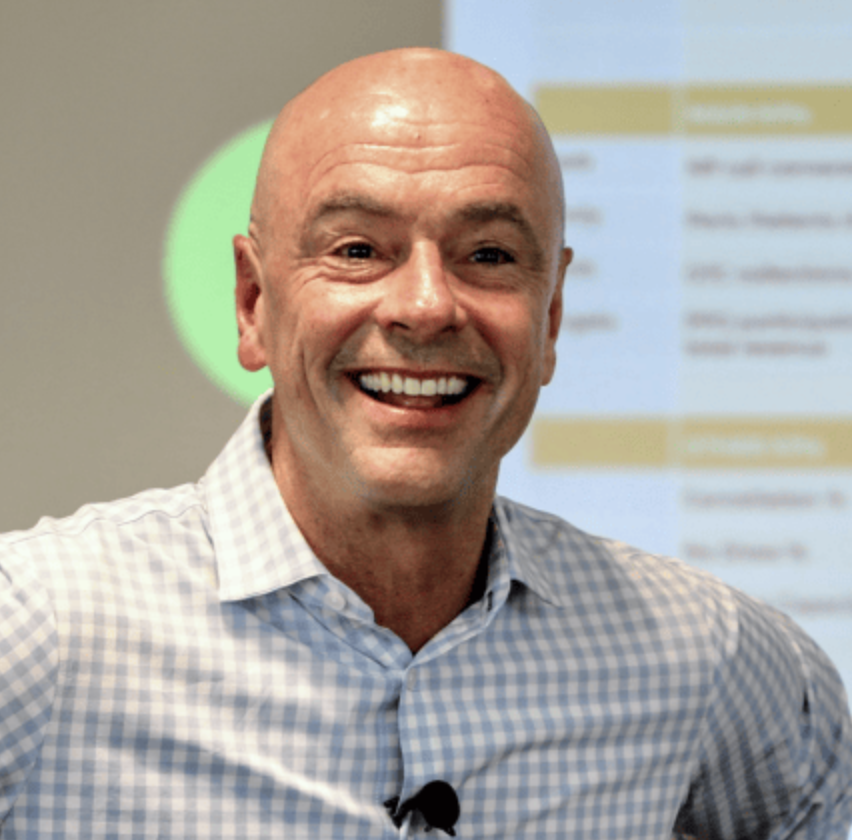Have you ever been 100% certain that a patient will commit to your treatment plan, only to find out later the patient left the office without scheduling?
Have you been shocked to hear that a patient canceled and did not reschedule, with no reason given other than “I need to think about it more”?
Has a patient ever showed up for their appointment, been completely shocked by the price, and canceled on the spot?
Chances are, you’ve experienced one or all of these situations more than once. If that’s the case, you’ve got some issues with E-R=C moments.
What is an E-R=C moment?
At ACT, you will often hear our team and coaches referring to this essential formula, which explains what happens when there is a disconnect between our patients’ (our team members’) expectations and what happens in reality. When expectations and reality are not equal, conflict ensues. So simply stated, Expectations-Reality=Conflict.
With our patients, this “conflict” often shows up as unaccepted treatment, cancellations, and failed appointments.
So how can you set yourself up for success and eliminate these moments? The answer comes with consistent and clear communication. Let’s look at three things you can do to ensure these E minus R moments are not equating to incomplete treatment plans and failed treatment appointments in your office.
1: Don’t Rush the Process
You’ve presented the same or very similar treatment plans to patients hundreds, if not thousands of times. But remember, for each patient, this is only the first or second time that they have heard the proposed treatment. Remember to slow down and take the time to thoroughly educate the patient about the need for and process of the proposed treatment. This type of patient education allows them to play a more significant role in their own care, and better understanding leads to higher treatment acceptance rates.
2: Remember the “Rule of Seven”
How many times do you need to hear something before it sticks? Once, twice, maybe seven times? Marketers have long used the “Rule of Seven,” which simply states that it takes an average of seven interactions with your product/brand, etc. before a purchase will take place. For your practice, this means that we need to be consistent in our communication with patients and ensure that they are actually hearing and seeing the proposed treatment more than once.
Clear patient handoffs and an excellent checkout process are the perfect way to achieve this. Make sure that at each handoff, the team clearly communicates to the patient what the proposed treatment is and the expectation for the next appointment in the office.
3: Have Patients Sign Treatment Plans
No matter the size and scope of the work being proposed, the patient should sign a treatment plan each and every time. We all can forget what we hear or remember something a bit differently than the next person. This is why presenting patients with a treatment plan that they can sign and take with them is extremely important. A good dental treatment plan will outline exactly what treatment is being proposed, the timeframe for the treatment, and the patient’s investment portion.
By following the three steps above, you will decrease E-R moments with your patients and see more patients saying yes to the treatment that they need!
Categories

Get access to the best dental educators on the planet to bring you "best practices" and help you become the dentist you were called to be. Watch what you want, when you want it. It's 24/7 on-demand access. Friday's we host "Master Classes" with the very best dental speakers you will ever see.

Reserve your spot at the next ACT Dental Master Class
Learn From One of the Best Educators During Our BEST PRACTICES MASTER CLASS Experience.
Kirk Behrendt
Kirk Behrendt is a renowned consultant and speaker in the dental industry, known for his expertise in helping dentists create better practices and better lives. With over 30 years of experience in the field, Kirk has dedicated his professional life to optimizing the best systems and practices in dentistry. Kirk has been a featured speaker at every major dental meeting in the United States. His company, ACT Dental, has consistently been ranked as one of the top dental consultants in Dentistry Today's annual rankings for the past 10 years. In addition, ACT Dental was named one of the fastest-growing companies in the United States by Inc Magazine, appearing on their Inc 5000 list. Kirk's motivational skills are widely recognized in the dental industry. Dr. Peter Dawson of The Dawson Academy has referred to Kirk as "THE best motivator I have ever heard." Kirk has also assembled a trusted team of advisor experts who work with dentists to customize individual solutions that meet their unique needs. When he's not motivating dentists and their teams, Kirk enjoys coaching his children's sports teams and spending time with his amazing wife, Sarah, and their four children, Kinzie, Lily, Zoe, and Bo.
RECENT POSTS
Evaluate Your Year with Intention
December 19, 2025
984: How to Address Chronic Attendance Issues – Alan Twigg
December 19, 2025
983: 2 Things You Must Do in 2026 to Improve Your Reimbursements – Shelley DeGroff
December 17, 2025
Real Practices. Real Progress. Real Proof. - A Year Worth Celebrating
December 15, 2025
Solve the 5 Problems that Overwhelm Your Team
December 12, 2025
981: Leadership Lessons for Thriving Practices – Michelle Wakeman
December 11, 2025
980: This Year, Take Back Control: Protect Your Practice. Reclaim Your Life – Miranda Beeson
December 10, 2025
Is Your Practice Stuck On The Wrong Side Of The Bridge?
December 08, 2025









